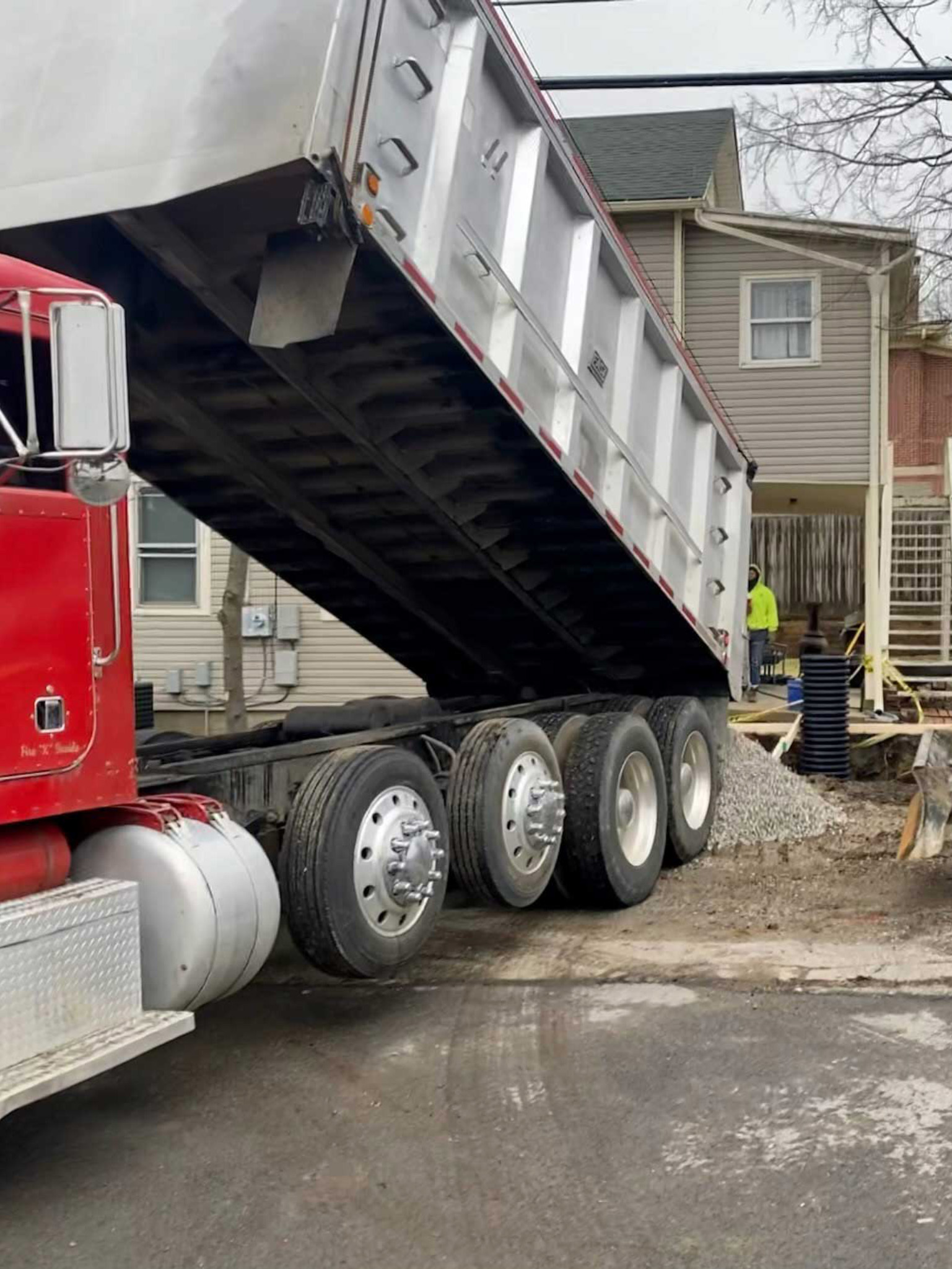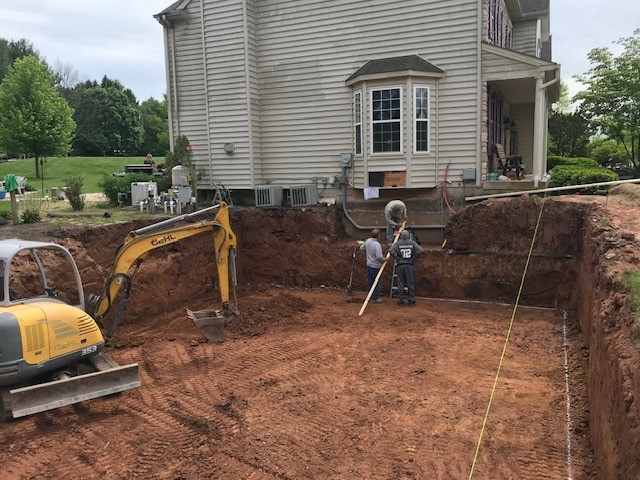Commercial Lancaster Trenching - Trenching Services for Businesses in Lancaster
Commercial Lancaster Trenching - Trenching Services for Businesses in Lancaster
Blog Article
Comprehensive Expedition: The Scientific Research Behind Superior Excavation Practices
The realm of excavation techniques is a domain where science links with craftsmanship to unearth the secrets concealed underneath the planet's surface. From ancient hand tools to modern hydraulic excavators, the evolution of excavation strategies has actually been a testimony to human ingenuity and technical improvements. What genuinely establishes premium excavation methods apart is a deep understanding of geological concepts, paired with the use of innovative devices and approaches. By discovering the science behind these methods, we can reveal the keys that lie beneath our feet and appreciate the precision and competence that enter into every dig.
Evolution of Excavation Techniques
Throughout history, the evolution of excavation techniques has actually played a critical duty ahead of time building practices and historical explorations. From the rudimentary devices made use of by our forefathers to the advanced machinery utilized in modern times, the progression of excavation techniques has actually significantly transformed exactly how we come close to numerous tasks.
In ancient times, hand-operated labor with basic tools such as wheelbarrows, pickaxes, and shovels was the primary approach of excavation. This labor-intensive process restricted the deepness and range of excavations, typically resulting in slow-moving progress and restricted access to particular websites. As civilizations progressed, so did the strategies and tools used for excavation.
The Industrial Revolution marked a transforming point in excavation practices with the intro of steam-powered machinery. This advancement reinvented the area, permitting faster and a lot more comprehensive excavations. In modern times, technology plays a crucial duty in excavation, with improvements like general practitioner systems, drones, and 3D scanning boosting precision and performance in the field. The evolution of excavation methods remains to form the way we construct, discover, and recognize the globe around us.
Function of Innovation in Excavation

The integration of sophisticated technology has actually basically reinvented the area of excavation, boosting precision and performance to extraordinary degrees. Among the key technological developments that has significantly impacted excavation techniques is the use of GPS systems. These systems enable specific mapping of excavation sites, enabling drivers to accurately find below ground utilities and structures. In addition, making use of telematics in excavation tools has allowed real-time tracking of maker efficiency, causing proactive maintenance and raised functional efficiency.
In addition, the introduction of 3D modeling and simulation software application has structured the preparation process for excavation jobs. Drivers and designers can currently imagine the whole excavation procedure before breaking ground, determining potential challenges and enhancing workflow. Combined with this, the application of drones in excavation activities has promoted aerial surveys, volumetric dimensions, and website examinations with unmatched speed and precision.
Geological Concepts in Excavation
An understanding of geological principles is important for making sure the architectural integrity and stability of excavation websites. Geological aspects play an essential duty in establishing the expediency and safety and security of excavation tasks (excavating ohio). One crucial geological concept to consider is the sort of dirt or rock existing at the website. Various dirt kinds, such as clay, crushed rock, or sand, have differing levels of security and need various excavation techniques. Natural soils like clay might call for extra assistance to stop collapses, while sandy dirts might be susceptible to erosion during excavation.
Additionally, the geological structure of the location, consisting of mistakes, fractures, and rock developments, must be very carefully assessed to identify possible threats and challenges. Digging deep into near mistake lines or unpredictable rock developments can bring about instability and prospective dangers. By conducting extensive geological surveys and analysis, excavators and engineers can develop strategies to reduce threats and guarantee the successful completion of excavation projects. Inevitably, integrating geological concepts into excavation techniques is essential for attaining safe, effective, and sustainable outcomes.

Newest Devices for Excavation
In the realm of excavation techniques, modern technologies in devices have changed the efficiency and precision of excavation processes. One of the current devices making waves in the market is making use of drones equipped with innovative imaging innovation. These drones can supply in-depth aerial surveys of excavation websites, using real-time information on topography and prospective hazards. This details help in better planning and decision-making throughout the excavation process.
An additional cutting-edge tool description obtaining appeal is the application of 3D printing innovation for creating custom-made excavation devices. This enables for the manufacturing of specialized devices that are tailored to the specific needs of a project, increasing effectiveness and minimizing my company downtime.
Additionally, advancements in materials scientific research have resulted in the development of stronger and extra sturdy excavation tools. lancaster excavation. Tungsten carbide-tipped excavator accessories, for instance, deal premium efficiency in tough ground problems, enhancing productivity on-site
Scientific research's Influence on Excavation Practices

Furthermore, clinical research on soil mechanics and geotechnical design has actually provided important understandings right into soil habits, permitting excavation professionals to make educated choices pertaining to excavation methods and soil stablizing strategies. Generally, scientific research proceeds to drive technology and improvement in excavation practices, making excavation jobs extra effective, affordable, and sustainable.

Final Thought
Finally, the advancement of excavation strategies has actually been greatly affected by innovations in technology and a much deeper understanding of geological concepts. The newest tools and devices made use of in excavation have actually boosted effectiveness and precision in the area. The application of scientific knowledge has actually substantially enhanced excavation methods, causing a lot more lasting and have a peek at this site efficient methods for digging deep into various sorts of products.
In the world of excavation methods, modern advancements in tools have changed the performance and precision of excavation processes. By leveraging scientific principles, the excavation sector has been able to significantly improve effectiveness, precision, and safety and security in excavation procedures. GPR enables excavation teams to non-invasively scan and map subsurface frameworks, utilities, and potential threats, allowing them to prepare excavation jobs with higher precision and minimized risk of accidents.
In addition, scientific research on dirt mechanics and geotechnical design has actually supplied useful insights right into dirt actions, allowing excavation experts to make informed choices regarding excavation techniques and soil stablizing methods. Overall, scientific research continues to drive advancement and improvement in excavation methods, making excavation tasks a lot more effective, economical, and lasting.
Report this page